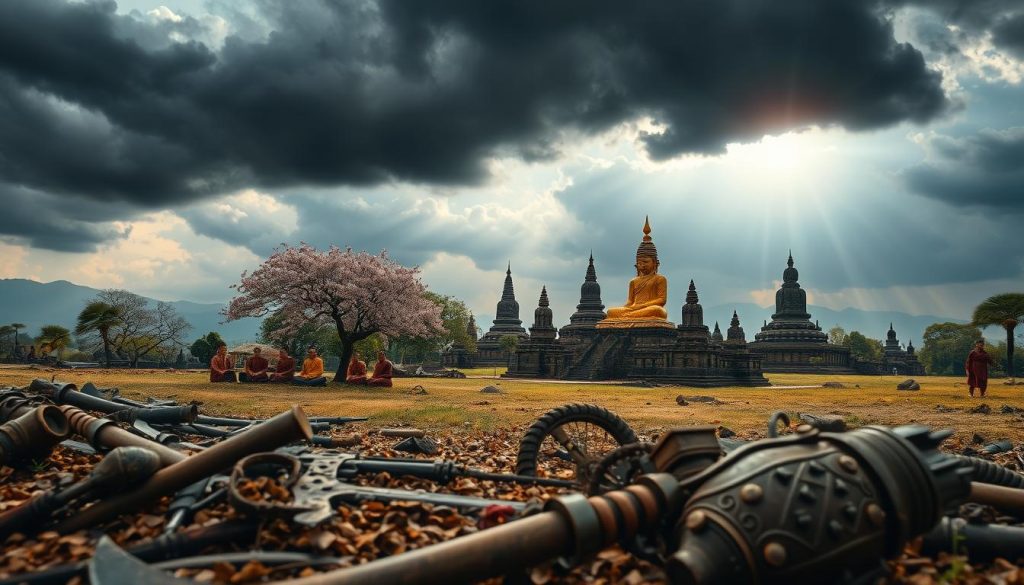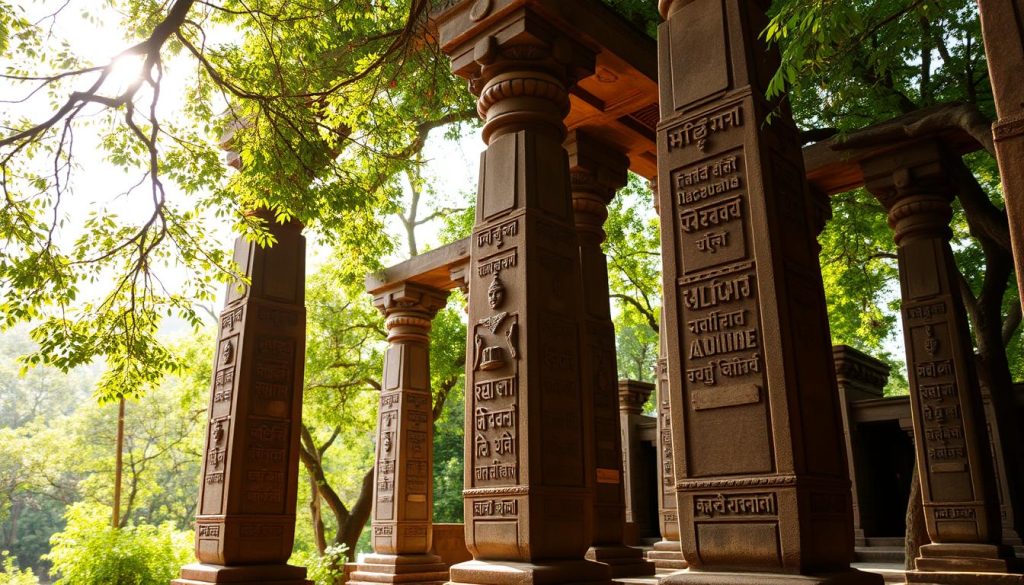The Lingaraj Temple
The Lingaraj Temple, an iconic and one of the most revered Hindu temples in India, stands as a magnificent symbol of Odisha’s rich cultural, spiritual, and architectural heritage. Situated in the heart of Bhubaneswar, the capital city of the eastern Indian state of Odisha, the temple is a stellar example of the Kalinga style of architecture. Dedicated to Lord Shiva, it not only holds immense religious significance but also draws thousands of devotees and tourists alike every year due to its remarkable design, history, and cultural importance.
1. Historical and Mythological Background of Lingaraj Temple
The origins of the Lingaraj Temple date back to the 6th century CE, during the rule of the Somavamsi dynasty. However, the current structure that stands today was built during the reign of King Jajati Keshari in the 11th century. Legend and myth surround the temple’s creation, and it is believed that it was constructed to house an ancient Shiva linga that was originally worshipped by Lord Indra, the king of the gods, who had personally consecrated it.
According to local lore, the Linga of Lingaraj is believed to be self-manifested, known as “Swayambhu,” and there are myths regarding its supernatural powers. The temple and the deity are mentioned in ancient texts like the Skanda Purana and the Lingaraja Mahatmya, which also highlight its importance as a center of Shaivism in the region.
The Lingaraj Temple’s religious significance extends far beyond its size and majesty. It is considered one of the foremost places of worship for Shaivites and serves as a point of convergence for both pilgrims and ascetics who seek blessings from Lord Shiva. The temple’s rituals, festivals, and daily activities revolve around the worship of the Linga, which is believed to symbolize Lord Shiva’s creative and destructive powers.
2. Architectural Masterpiece: The Kalinga Style
The Lingaraj Temple is an architectural marvel and a prime example of the Kalinga style, which is one of the oldest and most intricate architectural forms of ancient India. The Kalinga style is characterized by its massive structures, complex carvings, and the integration of various elements that reflect both secular and religious aspects of life.
2.1 Temple Layout
The temple complex is spread over a vast area and is enclosed by a high wall, with a series of smaller temples and shrines situated within its precincts. The temple is divided into several sections, each designed for specific functions related to worship and ritualistic practices. The main sanctum (Garbhagriha), where the Linga is enshrined, is situated at the heart of the temple. Surrounding this sanctum are various halls, corridors, and shrines dedicated to other gods and goddesses, including Lord Vishnu, Lord Ganesha, and Goddess Parvati.
2.2 Main Temple (Deula)
The main temple structure, called the Deula, rises to a towering height and is known for its intricately carved stone surfaces. The temple is composed of three main parts:
- Vimana (Sanctum): This is the central chamber where the sacred Shiva Linga is placed. The sanctum is adorned with sculpted panels depicting scenes from Hindu mythology, including deities, celestial beings, and other divine motifs. The walls of the sanctum are engraved with beautiful carvings of Lord Shiva in various poses.
- Jagamohana (Assembly Hall): The Jagamohana serves as the hall for congregational worship. Its roof is supported by numerous ornate pillars, each depicting gods, dancers, and mythological stories.
- Nata Mandapa (Dance Hall): This section of the temple is where the traditional Odissi dance performances are held during major festivals. The Nata Mandapa is a large pavilion with many pillars, and it serves as a space for both religious and cultural performances.
2.3 Shikhara (Spire)
At the apex of the temple is the Shikhara, the spire that towers over the sanctum. The Shikhara is designed to resemble a mountain, symbolizing the sacred Mount Kailash, the abode of Lord Shiva. The intricate carvings on the Shikhara add to the temple’s grandeur and spiritual significance. The spire is often regarded as the most defining feature of Kalinga architecture and remains an awe-inspiring element of the Lingaraj Temple.
2.4 Pillars and Sculptures
The Lingaraj Temple is renowned for its vast array of sculptures and intricately carved pillars. The temple complex houses over 150 smaller shrines, with each one adorned with detailed sculptures depicting various deities, mythological stories, and abstract art forms. These carvings are not only a testament to the craftsmanship of ancient artisans but also offer insight into the religious and social life of the period.
The temple’s pillars are particularly noteworthy. They feature elaborate depictions of various gods, goddesses, dancers, and animals. Some pillars are known for their musical properties, producing melodious sounds when struck. These musical pillars are among the architectural wonders of the Lingaraj Temple.
3. Religious Significance and Rituals
The Lingaraj Temple holds immense religious importance, especially for followers of Shaivism. Every day, thousands of devotees visit the temple to offer prayers and perform rituals. The temple is also an important center for annual festivals and religious observances.
3.1 Worship and Rituals
The temple follows a strict regimen of rituals and ceremonies, which are performed throughout the day. The daily puja is a multi-stage process, which begins with the opening of the temple gates and the lighting of the sacred fire. The worship of Lord Shiva is done through offerings of fruits, flowers, water, and the application of sandalwood paste to the Linga.
The temple’s rituals are presided over by a set of priests who maintain the sanctity and sanctum of the temple. The priests perform various rites, including the Abhisheka (ceremonial bathing of the Linga), Aarti (sacred offerings of light), and chanting of Vedic hymns.
3.2 Major Festivals
The Lingaraj Temple is the focal point of several important festivals throughout the year. The most prominent of these is the annual Shiva Ratri, a night dedicated to worshipping Lord Shiva, which attracts tens of thousands of devotees from across the country. During this festival, the temple is illuminated with oil lamps, and devotees fast and chant mantras to seek blessings.
Other notable festivals include Baisakhi, Mahashivaratri, and Ratha Yatra. During these festivals, special rituals, prayers, and processions take place, with large crowds gathering to participate in the celebrations.
4. Cultural and Social Importance
The Lingaraj Temple is not just a religious site but also a cultural hub, deeply influencing the art, music, dance, and literature of the region. It is closely associated with the Odissi dance form, which is one of the classical dances of India. The temple’s Nata Mandapa serves as a venue for Odissi performances during festivals and special events, and the connection between the temple and the dance form remains strong to this day.
4.1 Odissi Dance and the Lingaraj Temple
Odissi, one of the oldest classical dance forms of India, is often performed in the Nata Mandapa of the Lingaraj Temple. The dance is dedicated to the worship of Lord Shiva, and its intricate movements, graceful posture, and symbolic gestures make it a suitable art form for temple rituals. The dance is also a form of devotion, and the performers often invoke the blessings of Lord Shiva while presenting their art.
5. Tourism and Preservation Efforts
The Lingaraj Temple is a major tourist destination, attracting visitors not just for religious reasons but also for its architectural beauty and historical significance. The temple is managed by the Temple Trust, which works to ensure its upkeep and preservation. The government of Odisha, along with the Archaeological Survey of India (ASI), has undertaken several initiatives to preserve the temple’s intricate carvings and structures, protecting it from the ravages of time.
Moreover, the temple complex, with its tranquil ambiance and lush surroundings, offers a serene escape for visitors who wish to explore the culture and heritage of Odisha. In recent years, the government has also focused on improving infrastructure, such as roads, security, and visitor amenities, to make the experience more accessible and comfortable for tourists.
6. Conclusion: The Lingaraj Temple – A Timeless Treasure
The Lingaraj Temple stands as a testament to the genius of ancient Indian architecture, religious fervor, and the rich cultural heritage of Odisha. Its monumental size, exquisite craftsmanship, and spiritual significance have made it an enduring symbol of Lord Shiva’s presence in the region. Whether one visits to pay respects, explore its architectural beauty, or witness the cultural vibrancy of Odisha, the Lingaraj Temple offers an unparalleled experience that connects the past with the present, tradition with modernity.
As a focal point of devotion, art, and history, the Lingaraj Temple continues to stand tall as one of India’s most important religious and architectural landmarks, leaving an indelible impression on the hearts and minds of all who visit it.








